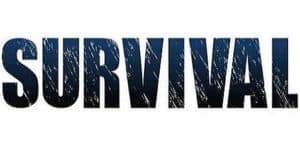After a natural disaster in your community it could take up to several days (or even weeks) to receive assistance. This means you need to take steps today in order to prepare yourself to survive for a MINIMUM of 72 hours (likely longer).
By putting together a supply of emergency supply of food, water, medication and other supplies you will be better prepared to survive a disaster successfully.
Under extreme conditions you could possibly lose access to basic services like electricity, gas, water, sewage treatment, and telephones. These services you normally take for granted could be cut off for days, or even a week or longer depending on the circumstances.
Follow these steps to ensure that your family can survive a disaster when it strikes. For many families in America it may not be a question of “if” but “when.”
1) Put Together a Simple Survival Kit
Your survival kit must include one gallon of water per person per day. This will be used for both drinking and sanitation. In the aftermath of a disaster your tap water may not work or worse it may be contaminated.
Store at least three days worth of non-perishable foods in an easily accessible area. Remember to toss in a can opener for your canned items.
If you find yourself without power and limited communication a battery-powered or hand crank radio will help you stay in contact informed about the recovery efforts. Stock up on extra batteries as well. Multiple flashlights will come in handy when the lights go out. More batteries for these as well.
It is recommended that you store a well stocked first aid kit in the event of an injury or illness. Other items such as a dust mask, plastic sheeting, garbage bags and duct tape should be included.
2) Go Beyond the Basic Supplies
After you have successfully finished building a basic survival kit, it is time to include other items of equal importance.
Keep copies of your important family documents such as insurance policies, identification cards, bank account records, legal documents, and so on. These need to be stored in a waterproof, portable container.
Your survival kit should include a sleeping bag or warm blanket for each person. In the event that you are without heat or live in a cold-weather climate you might consider storing additional bedding.
A complete change of clothing for each person should be in your survival kit prior to disaster striking. This would include a long sleeved shirt, long pants and study shoes. In the event you must evacuate your home quickly or have limited access to your belongings, your change of clothes will be safely stored in your survival kit for easy access.
Household non-scented chlorine bleach and a medicine dropper can be used as a disinfectant or to treat water in an emergency. Use it to treat water by using 16 drops of regular household liquid bleach per gallon of water.
There are many items you could add to your bug out bag to help you stay comfortable and safe in an emergency. Remember to keep it lightweight and portable in the event you must leave your house.
A few other items to consider would include a fire extinguisher, waterproof matches, mess kits, paper cups, plates and plastic utensils and paper towels.
3) Create a Disaster Plan for Your Family
Take time now to develop your disaster plan for multiple scenarios. Go over the plan with all members of your family. Practice now so there is no confusion when it comes time to execute the plan.
You should designate an Emergency Contact that is out-of town. This person will be in a better position to communicate with separated family members during a disaster. Be sure to tell your family or friends that they are your emergency contact. Inform them of your plan and how you would like them to coordinate the information.
Make sure all members of your family knows the phone number of the Emergency contact. Always carry a cell phone, coins or a prepaid phone card with you at all times to call the emergency contact.
It is smart to subscribe to emergency alert services in your community. These will allow you to receive text alerts or emails during bad weather, road closings or local emergencies. You can sign up by visiting your local Office of Emergency Management website.
4) Stay Informed on Events in Your Community
You can proactively prepare for a disaster in your community by putting together an emergency supply kit and creating a family emergency plan.
Keep yourself informed about the types of potential emergencies that could happen where you live. You can also investigate the emergency plans that have been created for your area by contacting your state and local government. Ask your neighbors about their plans in the event of an emergency.
Many Americans are now taking preparedness into their own hands in the event of a man-made or natural disaster. Knowing what to do in an emergency is an important part of your disaster preparedness plan and the key to your survival.
Of course, the above is just the basics, as there are MANY more things you can do to be prepared for survival, but you have to start somewhere. Taking the 4 steps above will put you in a better position than 95% of people out there.
